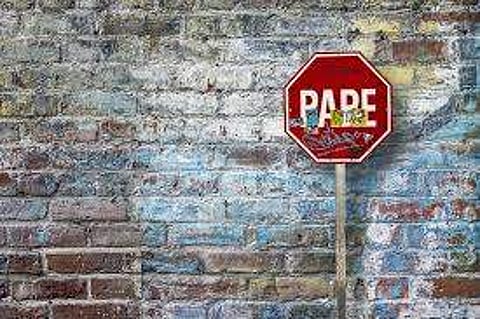

Greetings from the US of A! I think it would be an interesting detour if we were to explore significant variants and similarities in the art cultures of a completely different continent for a few weeks, starting today. Personal reasons aside, a visit to the capital state of Washington DC has been a most enlightening one. For a first-timer, like yours truly, the first thing that hits you as you step out of your flight is the abundance of signage.
Every inch of open space has a popup or a signboard giving you directions, telling you to dos and don’ts, bombarding your jet-lagged brain with images of the prime real estate and cozy, warm kitchens and delicious food that are a far cry from the freezing reality you have just stepped into. Jokes apart, the history of signage began right from the time man realized he could send signals to his fellow beings through a variety of media such as smoke, cave paintings, moving onto hieroglyphics; so on and so forth to the present times of neon signboards.
The purposes of signage changed throughout the ages. Ancient civilizations relied more on imagery than a the actual text. Most of the messages to be conveyed were limited to the nature of trades, and routes to cities. As time went by the generally utilitarian signage changed its functional aspect to an art form. Tribes and clans took pride in their insignia and totems.
Households had crested. Business owners realized that colorful images, mottos, banners, and shields would draw in more customers.Creativity helped attract new patronage- so much in fact that after a point city council authorities and trade unions had to place restrictions on the dimensions of the signboards and standees that all the businesses were putting up.
Every other homegrown business now had a unique signage that they were trying to claim as their own. This led to the need for trademarking and copyrighting. While products and services were patented, signage itself became the visible emblem of trades and movements across the globe.
The measurements and appearance of the sign or logo were now precise to the micron so that other similar logos or emblems could never completely replicate its visual qualities. This became a necessity with globalization and its impact on visibility and reach. It isn’t a point of contention though with national and international regulations preventing the willful appropriation of trade signage.
From smoke signals to a multi-million dollar industry, signage art plays on one of man’s basic instincts- to automatically link meaning to a visual symbol. In the Western scenario, one’s senses are inundated by signage due to the excessively independent and isolated lifestyles most people lead. In overpopulated nations such as India, signage would rather be redundant because there is a pre-existing melee of sights and sounds that do the task effectively. While most signs are universal, many are quirky in their own aspect and can prove quite a study for the interested learner.
(Ann Mary Thomas is a former professor of Communication Studies and is an Arts and Communications scholar. A freelance illustrator and writer, she hopes to explore the underlying ideas behind art and artists)
